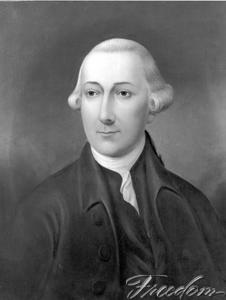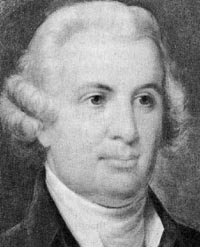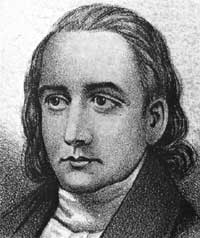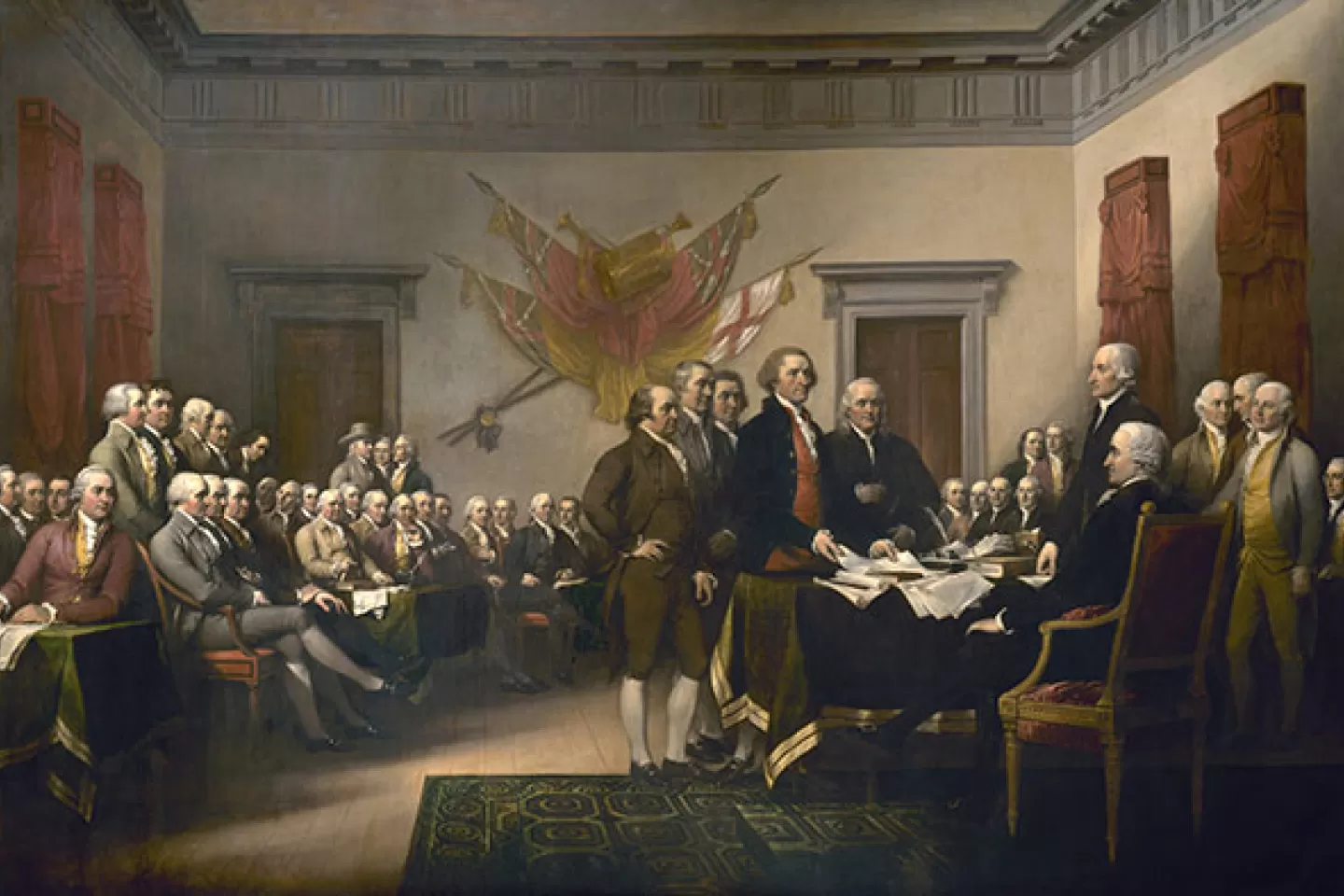By Eric Medlin, September 2022
On July 4, 1776, the Continental Congress ratified the Declaration of Independence. The Continental Congress represented critics of Great Britain, the Patriots, throughout the thirteen former colonies. Fifty-six men signed the document, declaring the United States free from British rule after years of oppressive taxation, growing nationalism, and bloody conflict. The most famous signers of the Declaration of Independence at the time were arguably John Hancock, well-known for his massive signature, and Benjamin Franklin, a famous scientist and politician. Three men from North Carolina, chosen by the state’s First Provincial Congress, signed the Declaration: Joseph Hewes, William Hooper, and John Penn.;
Of the three signers, Joseph Hewes was the most well-established in the colony. Born in Princeton, New Jersey, in 1730, he moved to Edenton in 1755 and became a successful merchant. Hewes soon made close connections with the North Carolina elite by starting business relationships and marrying Isabella Johnston, who was the daughter of prominent colonial leader Samuel Johnston. He was elected to the Colonial Legislature in 1766. Hewes first went to the Continental Congress in 1774 and served on the Naval Committee. Instead of being a Loyalist (supportive of royal authority) or a Patriot (supportive of revolution), he was a moderate who wanted reconciliation with Great Britain. In 1775, Hewes became a member of the Provincial Assembly and was appointed to the Committee of Correspondence. The Committee of Correspondence led the opposition to Great Britain in the colony and made connections with Patriots in other colonies. By March of 1776, Hewes supported independence. After signing the Declaration of Independence in 1776, Hewes died in 1779 shortly after resigning from the Continental Congress.
William Hooper was also a politician representing Eastern North Carolina who was originally from a New England colony. Hooper was born in Boston in 1742 and settled in the Wilmington area in 1766. Hooper rose quickly in the colonial government, eventually being targeted and attacked by Regulators at one point. He was the youngest delegate to the First Provincial Congress in 1774. Hooper became known for his wisdom and ability to predict future developments. In 1774, despite his Loyalist father, Hooper argued that the colonies were “striding fast to independence, and ere long will build an empire upon the ruins of Great Britain."
Hooper excelled at making speeches. He worked closely with leading delegates such as Benjamin Franklin and John Adams. Hooper’s home, the lower Cape Fear, was a hotbed of Patriot activity. However, Hooper was still known as a moderate at the convention. He only began to support the cause of independence a few months before the Declaration was adopted, possibly as a result of the influence of John Adams. Following the war, Hooper moved inland to Hillsborough and mostly disappeared from the public eye. He long maintained a considerable plantation near Wilmington, however. Ten enslaved people worked the plantation, a direct contradiction to the ideas of the Declaration that Hooper signed.
John Penn was another Declaration signer from North Carolina. He was born in Virginia and lived in Granville County near the Virginia border, a county approximately thirty miles east of the key western settlement of Hillsborough. John Penn differed from the other two signers in a number of ways. Penn was a more recent arrival to North Carolina, having reached the colony in 1774. He was also not living in or representing the Eastern part of the state and was not from New England. Penn represented the people and interests of the western part of the colony at the Continental Congress. He supported independence a month before Hewes and Hooper did. Penn later became a substantial landowner and political leader in the new state.
All three of these signers had different experiences after the war. Some used their time in the Congress to launch successful political careers. Others suffered private misfortune in the new nation like many other revolutionary leaders. No matter their later career, all three played an enduring role in the development of both their state and the nation they helped to found.
References:
Adams, John. Letter from John Penn, April 28, 1776. Founders Online. Retrieved from https://founders.archives.gov/documents/Adams/06-04-02-0059.
Clark, Walter, ed. “New Hanover County Census of 1790.” The State Records of North Carolina, vol. 26. Raleigh, NC: P. M. Hale, Printer to the State. 1905. Documenting the American South. University Library, the University of North Carolina at Chapel Hill. https://docsouth.unc.edu/csr/index.php/document/csr26-0033.
Ganyard, Robert. The Emergence of North Carolina's Revolutionary State Government. Raleigh: North Carolina Dept. of Cultural Resources, Division of Archives and History, 1978.
Goodrich, Rev. Charles A. Lives of the Signers to the Declaration of Independence. New York: William Reed & Co., 1856.
Hooper, William. Letter from to James Iredell, April 26, 1774. In The Colonial Records of North Carolina, vol. 9, edited by William Saunders, 983–986. Raleigh, NC: P. M. Hale, Printer to the State, 1886. Documenting the American South. University Library, the University of North Carolina at Chapel Hill. https://docsouth.unc.edu/csr/index.php/document/csr09-0270.
“I. To William Hooper, 27 March 1776.” Founders Online. National Archives. https://founders.archives.gov/documents/Adams/06-04-02-0026-0002.
Morison, Samuel Eliot. John Paul Jones: A Sailor’s Biography. Boston: Little, Brown, and Company, 1959.
“North Carolina in the American Revolution: An Exhibition by The Society of the Cincinnati.” Society of the Cincinnati, 2006. https://www.americanrevolutioninstitute.org/wp-content/uploads/2018/09/N....
“Signers of the Declaration: William Hooper.” National Park Service. July 4, 2004. https://www.nps.gov/parkhistory/online_books/declaration/bio20.htm



